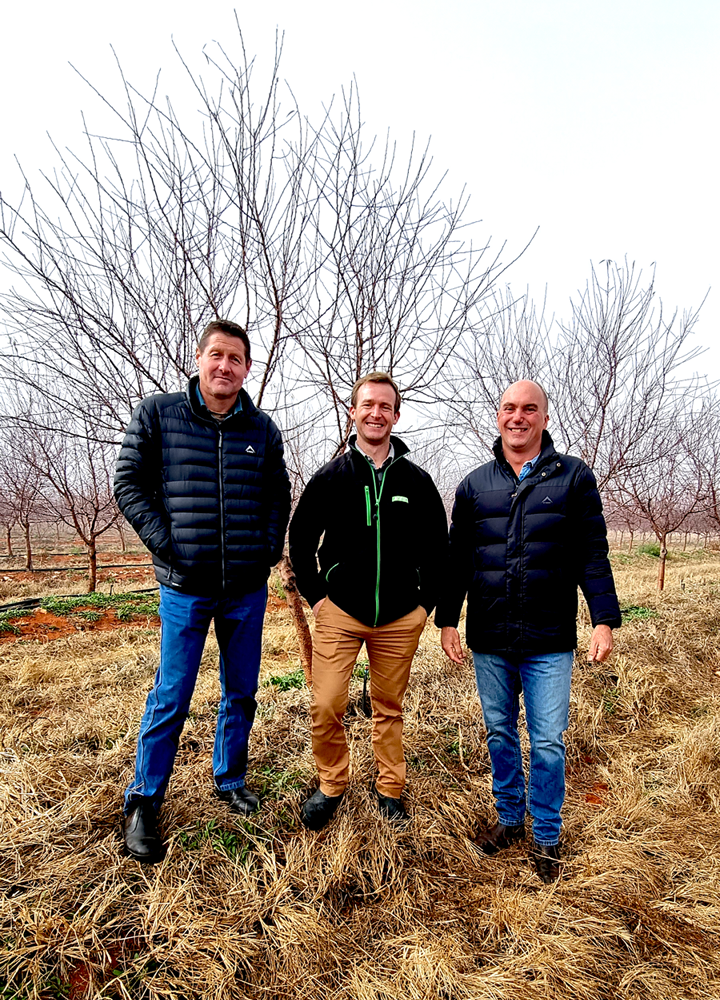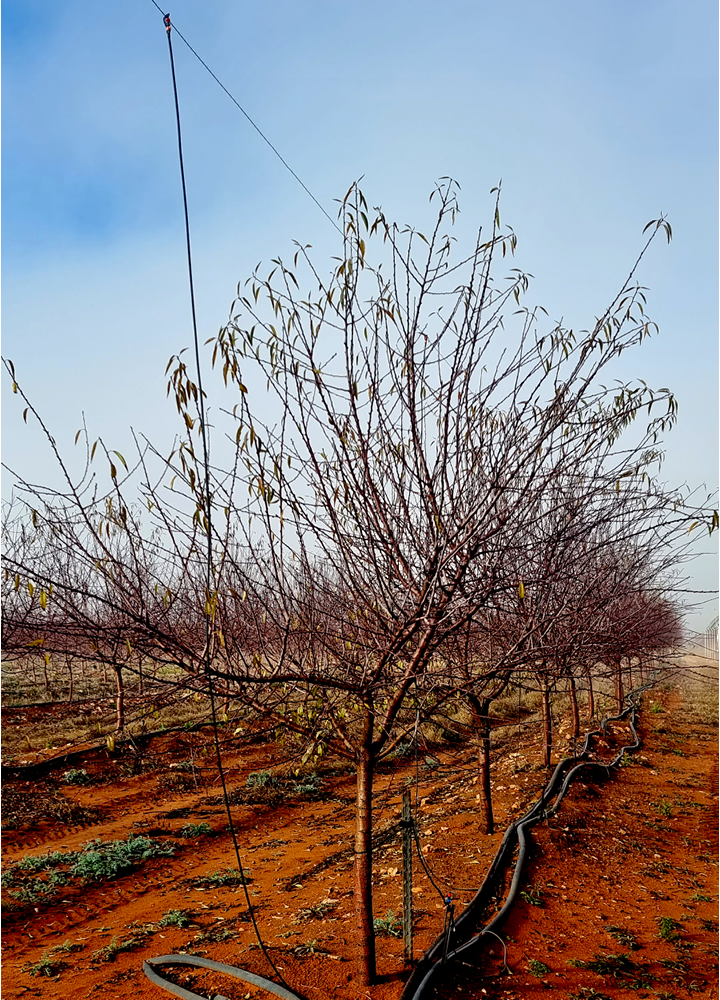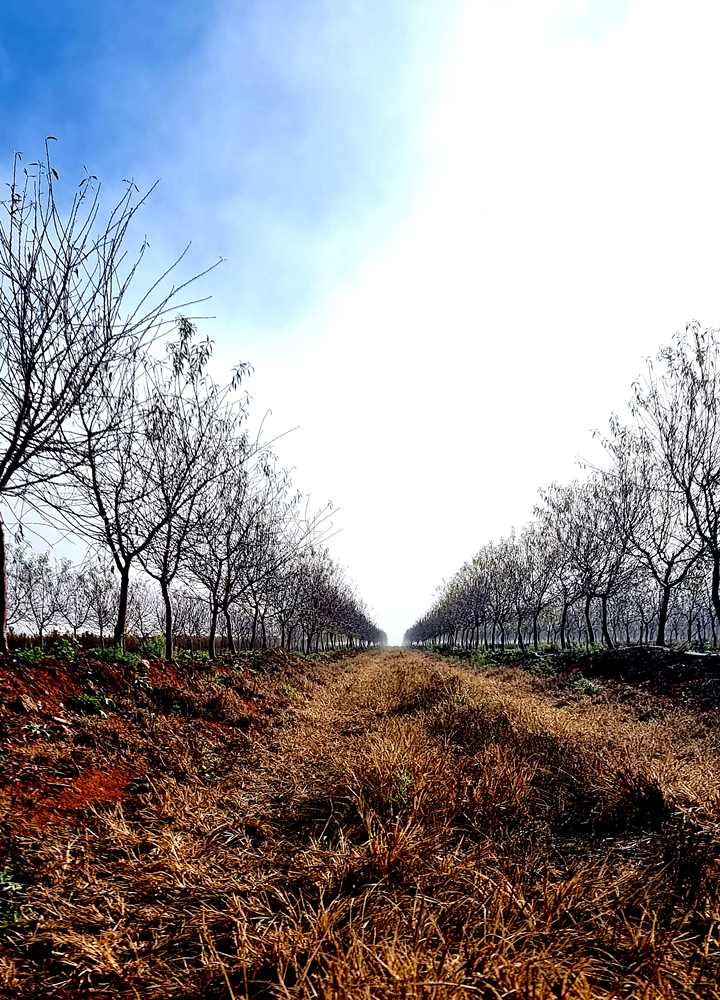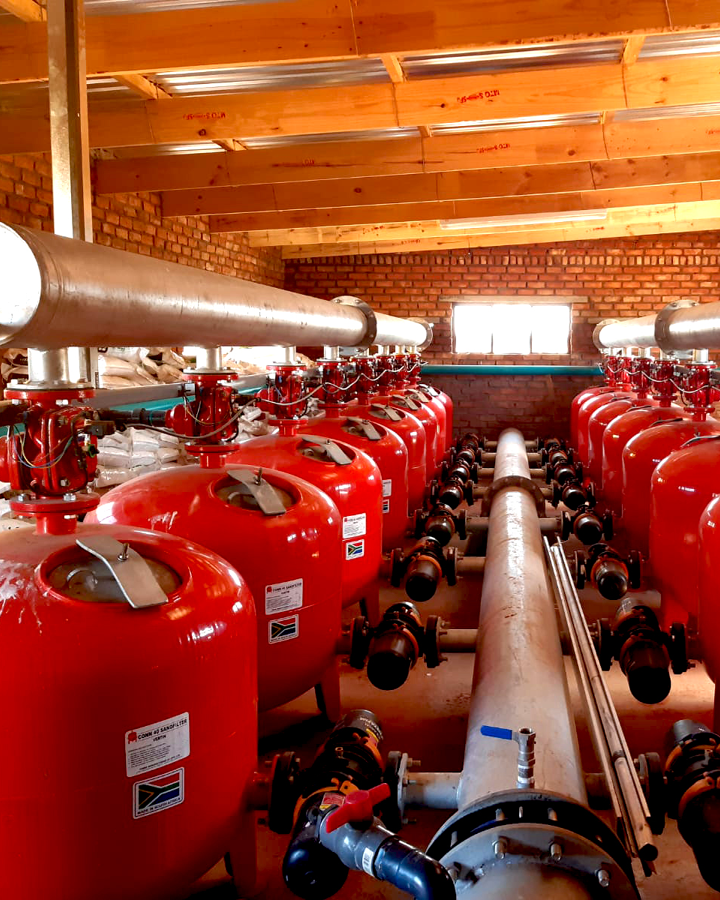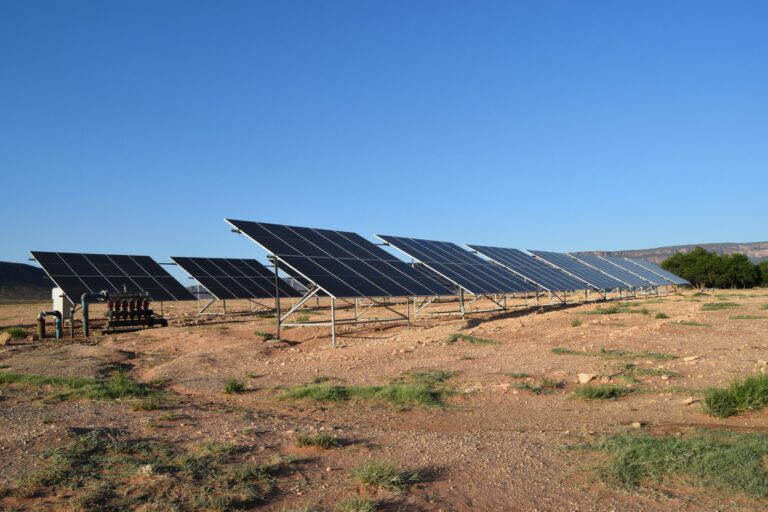The Nonparell cultivar
Chris and Okkie looked for a cultivar that will adapt well to the specific area, hence their choice to plant Nonparell. Almonds are all about colour, taste and texture. Nonparell is the sweetest almond with a pretty golden brown colour and a powdery texture. The cultivar also blooms three times per year, is self-pollinating but responds well to cross-pollinators. Along with Nonparell, a series of cross-pollinators were planted, this also reduces the risk and ensures the sustainability of the project.
Originally, the trees were planted 2m in-the-row with rows 5m apar t. High density plantings of 1x5m orchards are also evaluated.
The almond tree is pruned only after planting for ideal tree formation. The branches are very soft and flexible and as the tree grows and produces nuts, the effective penetration of sunlight is promoted. Optimal vegetative growth is stimulated. When the tree branches become too heavy due to the harvest load and begins to bend downwards, the trees are tied up for reinforcement and to ensure that the branches do not break.
Flowering and harvest time
Flowering and pollination times are around September, although the cultivar is self-pollinating, Chris also uses their bees to improve pollination. Harvest time usually occurs around March. A “shaking machine” is used with a net that goes around the tree’s trunk and then shakes the tree so that the nuts fall off. With the high-density orchards, a press machine can also be used that runs over the top of the trees and collects the crop. A large almond weighs around 1.2grams.
Why almonds?
According to Chris, almonds are a commodity with a wider market than pecans. Almonds are used not only in nut form but also processed into flour, milk and beauty products. The price is also more stable, and of course, the South African market is not yet saturated, there is still great demand for the product. Of course, they also are also considering the export market, particularly seen as though California, a producer of almonds, is experiencing serious water shortages. Indeed, California produces 82% of the world’s almonds.
More about the design
Chris and Okkie wanted a system which enables them to enjoy full control of their orchards. To make this possible, Phillip Kleinhans and Hein Venter of Agriplas inserted a Nutricontrol system, which it makes it possible for the farmers to control the system on their mobile phones and computers.
The Nutricontrol system controls the on-and-off switch of pumps, the flushing of 16 sand filters, volumetric fertiliser application and 17 field or hydraulic taps. Everything is controlled through Agriplas RX receivers, as well as a water meter which is essential for effective resource management. Agriplas Gulf Micro Sprinklers are used for cooling and frost control.
The idea is to add a weather station to the system later, as well as bet ter control of fertilizer programs.
For any technical enquiries, Wimpie Maree can be contacted at Agriplas (wmaree@agriplas.co.za) or Jaco Nolte at Agrico Kimberley (jaco.nolte@agrico.co.za).



